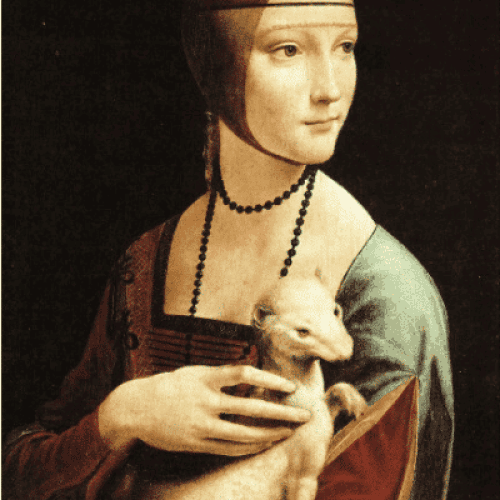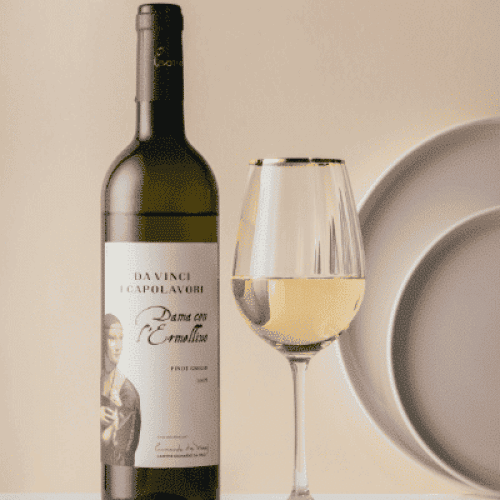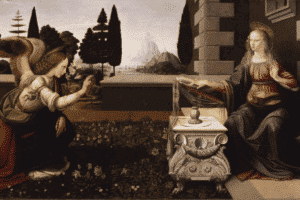The painting Dama con l’ermellino, or Lady with an Ermine, by Leonardo da Vinci is one of the great pictorial masterpieces of the Genius and a symbol of the extraordinary artistic level reached by Leonardo during his first stay in Milan, between 1482 and 1499. The painting is oil on panel (about 54×40 cm) and dated at around 1488-1490. Part of the private collection of Czartoryski princes until 2016, it was subsequently exhibited at the National Museum in Krakow until 2019, after which it was returned to the Czartoryski Museum, one of the largest museums in Poland.
Riddles and secrets behind Leonardo’s painting
Leonardo experts have long wondered about the identity of the young woman depicted in the painting and why she holds an ermine in her arms, somewhat particularly.
It would seem that the work is linked to Cecilia Gallerani, a cultured noble with a sharp intellect, as well as the lover of Ludovico Maria Sforza, known as “Il Moro“, regent of the Duchy of Milan during the Renaissance period. Ludovico Il Moro was a renowned patron of many talented artists of his time, including Leonardo da Vinci (to whom he commissioned the Last Supper).
But why the ermine, you may be wondering? Well, the Duke of Milan in 1488 received the prestigious honorary title of knight of the Order of the Ermine from the king of Naples, Ferdinand I of Aragon. This symbology that is anything but subtle, if you think that in Greek the ermine is called “galè” and its presence in the painting would therefore link the clue to the girl’s surname, Gallerani.
What makes the Lady with an Ermine one of Leonardo’s masterpieces?
Beyond the unusual pose of the girl (a novelty for the tradition of the Lombard portrait, which were represented mainly in profile), the admirable mastery of the Genius lies in the minuteness of the details in the hairstyle, in the typical costumes of the Sforza court, but above all in the subtle commonality of strokes between the lady and the ermine. Two slender and ethereal figures: she with a delicate complexion, the animal with a luminous coat; the intense and enigmatic gazes, both facing in the same direction.
Great relief is given to the movement of the hand, in the foreground and flooded with light as it caresses the animal with its tapered fingers, to underline the grace and purity of Cecilia, then sixteen, while an imperceptible smile hovers on the lips of the young woman: the same that we can observe in the San Giovanni Battista and in the Mona Lisa.
Pinot Grigio Dama con l’Ermellino and the grace of the homonymous painting
Leonardo da Vinci’s work “Lady with an Ermine” tells the whole world of the virtuosity of the Genius and the elegance of the Renaissance, all enclosed in a representation of grace and refinement. Just as the ermine and the girl identify themselves on common traits, also the Pinot Grigio Dama con l’Ermellino by Cantine Leonardo da Vinci wants to underline the refinement of the painting, paying homage to the Genius of Leonardo and his life, understood as an infinite adventure between art, science and nature.
Enveloping, like the touch of the Lady. Fresh, like her slender and timeless appearance. Intriguing, like its luminous charm that is renewed with every glance, with every sip. This Pinot Grigio wine is a privilege to be admired and enjoyed live.







